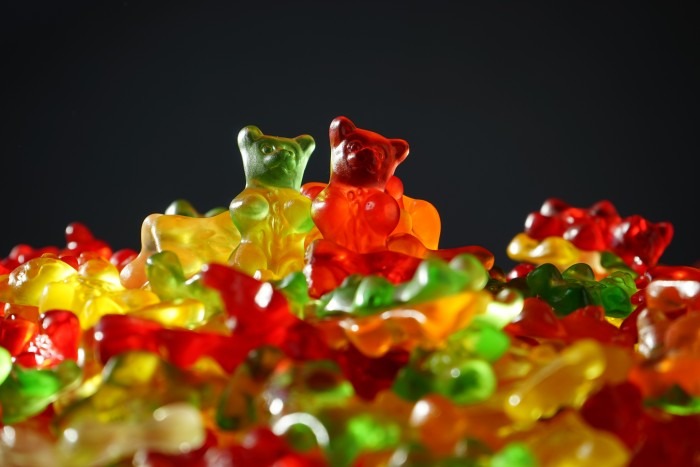
Sugar, Snacking and Stickiness
Dental cavities… does it really matter in Children’s teeth?
Childhood dental decay is a problem in Hong Kong. A recent study revealed that 37% of kindergarten children (2 out of 5) had at least one tooth with dental cavities. Decayed teeth can lead to pain and fever, which in turn leads to sleepless nights (for the child and parents!), distraction from learning and expensive trips to the dentist.
Some parents may think that since baby teeth will be replaced by adult teeth in the future, they require less care and attention. However, the transition from baby to adult teeth does not happen in a short period of time, rather a sequence lasting 7 years! Many are surprised that adult teeth can erupt as early as 5 years old and that some baby teeth will need to survive till 12! Breaking this sequence through early loss of baby teeth can result in dental malalignment, which may require orthodontic treatment to treat.
Natural Sugars and Refined Sugars
In general, there are natural sugars and refined or processed sugars in the markets. Natural sugars include sugars found in fruits (fructose), dairy products (lactose) as well as naturally produced sugars such as honey. In contrast there are refined sugars which are typically extracted from sugar cane, sugar beets or corn. These include granulated sugar (sucrose) and high-fructose corn syrup.
Also, the ways they are packaged are very different. For example, an apple will also contain vitamins, antioxidants and fibers. The fiber particularly can slow down the body’s absorption of fructose and its effect is a slow, controlled rise in blood sugar. Refined sugars on the other hand are very quickly broken down and absorbed by the body. This results in rapid blood sugar spikes and subsequently drops. This has the effect of a sugar ‘high’ and sugar ‘crash’ which can affect a child’s attention and concentration span.
How sugars are bad for teeth?
Surprisingly, sugar itself does not cause dental cavities. However, sugar is part of this formula:
Bacteria + Sugar + Time = Dental Decay
We all have naturally existing bacteria in our mouths. These bacteria will feed off the sugars and carbohydrates which stick to the tooth surface (enamel) after eating. As the bacteria digests the sugar, it starts to produce acid which demineralise or erodes away the tooth surface. Initially the enamel will resist the acid erosion, however over a period of time the acid will eventually dissolve the enamel which then results in dental decay and painful cavities.
An example of prolonged sugar exposure is seen in children who go to sleep with feeding cups or bottles containing milk or juice. This leads to a rapid pattern of dental caries on front teeth called nursing or bottle caries. To avoid this, it is advisable to just stick with water especially after their evening brush!
Texture Matters
Saliva is the body’s natural defence against dental decay. Properties in saliva helps neutralize acid, wash away sugars on the teeth and even start repairing damaged enamel. Substances which are sticky and ‘gummy’ are much more adherent to enamel and can take a much longer time to for saliva to dissolve. This prolonged exposure is a recipe for dental decay!
Apart from the obvious culprits such as gummy bears and toffees, parents need to be aware of other ‘healthier’ snacks such as dehydrated fruits which can have a high sugar content as well as having a very sticky texture. Even certain multivitamins which are presented in gummy form can have sugar in it. In fact, they can have the same sugar amount as regular gummy sweets! The best advice is to limit the frequency they have these types of candies and to have sips of water afterwards.
On the flipside, foods with a more ‘crip’ texture such as raw vegetables may help reduce dental decay by stimulating saliva flow. More fibrous vegetables such as celery may even act as a natural toothbrush. By scraping against the teeth during chewing, it can even clear plaque from the teeth!
“No added sugar” does not mean sugar free!
Parents need to read ingredients carefully when deciding foods or snacks for their kids. Labels such as ‘no added sugar’ and ‘no artificial sugars’ can sometimes give the impression that the product has little or no sugars. However, this is not always the case! For example, fresh apple juice may state it has no added sugars. Despite this, some brands may have the same sugar levels as pop drinks!
Plan your child’s snacking schedule
Kids burn a lot of calories, so often just three meals a day might not provide enough fuel! A general guideline is to include an additional 2 snacking periods, and to time them a couple of hours prior to lunch or dinner. Having a regular and predictable meal and snack time can ensure that they are hungry at the right times and that the snacks do not ruin their appetites at mealtimes.
About the Author
Dr. Jonathan Lui 雷威鴻醫生 is a specialist periodontist practicing at The Gum and Implant Dental Center. Dr. Lui is a Fellow of both the Hong Kong Academy of Medicine and The College of Dental Surgeons of HK. He obtained his university education from King’s College London and his specialist Periodontal training from Hong Kong University.
Click here for more details: http://gicdentalhk.com








